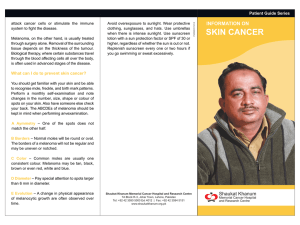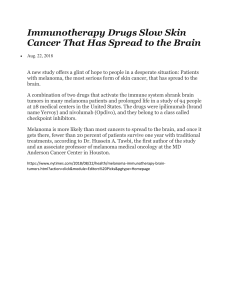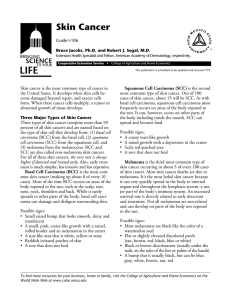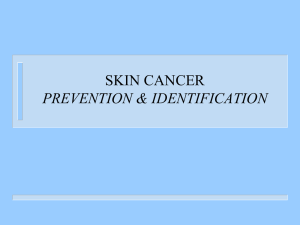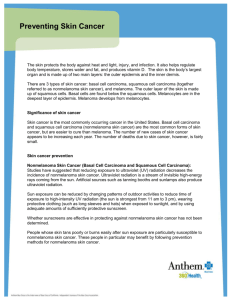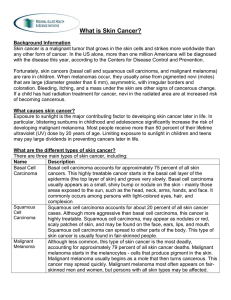INSTRUCTION SHEET: SKIN CANCER University of North Carolina Wilmington
advertisement
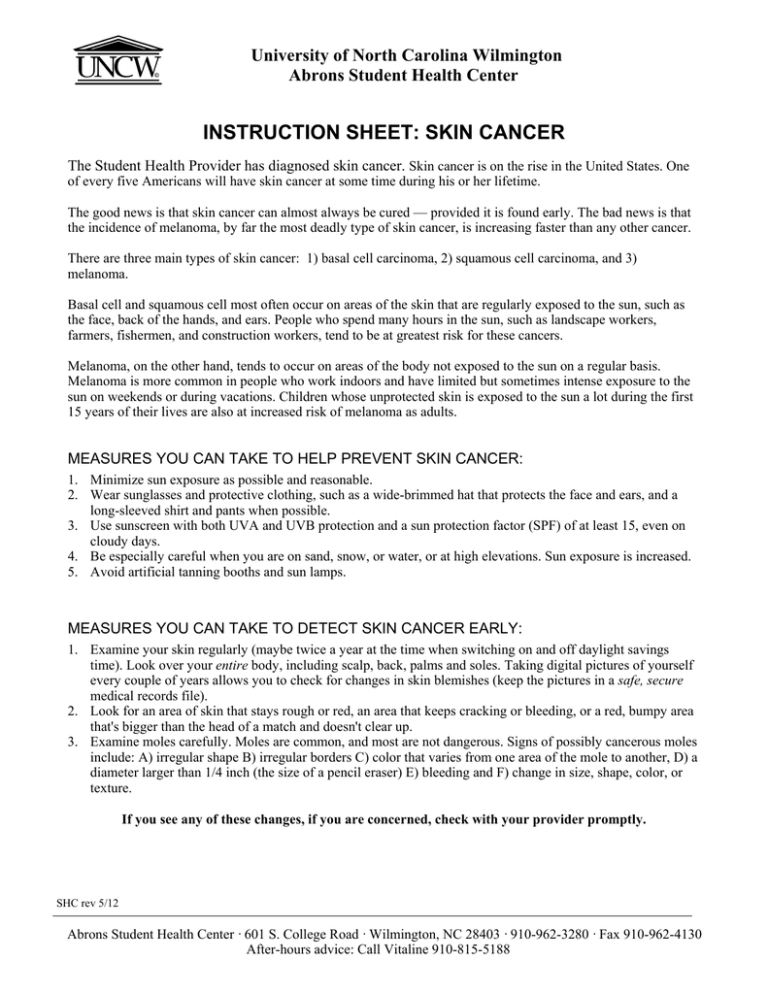
University of North Carolina Wilmington Abrons Student Health Center INSTRUCTION SHEET: SKIN CANCER The Student Health Provider has diagnosed skin cancer. Skin cancer is on the rise in the United States. One of every five Americans will have skin cancer at some time during his or her lifetime. The good news is that skin cancer can almost always be cured — provided it is found early. The bad news is that the incidence of melanoma, by far the most deadly type of skin cancer, is increasing faster than any other cancer. There are three main types of skin cancer: 1) basal cell carcinoma, 2) squamous cell carcinoma, and 3) melanoma. Basal cell and squamous cell most often occur on areas of the skin that are regularly exposed to the sun, such as the face, back of the hands, and ears. People who spend many hours in the sun, such as landscape workers, farmers, fishermen, and construction workers, tend to be at greatest risk for these cancers. Melanoma, on the other hand, tends to occur on areas of the body not exposed to the sun on a regular basis. Melanoma is more common in people who work indoors and have limited but sometimes intense exposure to the sun on weekends or during vacations. Children whose unprotected skin is exposed to the sun a lot during the first 15 years of their lives are also at increased risk of melanoma as adults. MEASURES YOU CAN TAKE TO HELP PREVENT SKIN CANCER: 1. Minimize sun exposure as possible and reasonable. 2. Wear sunglasses and protective clothing, such as a wide-brimmed hat that protects the face and ears, and a long-sleeved shirt and pants when possible. 3. Use sunscreen with both UVA and UVB protection and a sun protection factor (SPF) of at least 15, even on cloudy days. 4. Be especially careful when you are on sand, snow, or water, or at high elevations. Sun exposure is increased. 5. Avoid artificial tanning booths and sun lamps. MEASURES YOU CAN TAKE TO DETECT SKIN CANCER EARLY: 1. Examine your skin regularly (maybe twice a year at the time when switching on and off daylight savings time). Look over your entire body, including scalp, back, palms and soles. Taking digital pictures of yourself every couple of years allows you to check for changes in skin blemishes (keep the pictures in a safe, secure medical records file). 2. Look for an area of skin that stays rough or red, an area that keeps cracking or bleeding, or a red, bumpy area that's bigger than the head of a match and doesn't clear up. 3. Examine moles carefully. Moles are common, and most are not dangerous. Signs of possibly cancerous moles include: A) irregular shape B) irregular borders C) color that varies from one area of the mole to another, D) a diameter larger than 1/4 inch (the size of a pencil eraser) E) bleeding and F) change in size, shape, color, or texture. If you see any of these changes, if you are concerned, check with your provider promptly. SHC rev 5/12 Abrons Student Health Center · 601 S. College Road · Wilmington, NC 28403 · 910-962-3280 · Fax 910-962-4130 After-hours advice: Call Vitaline 910-815-5188
